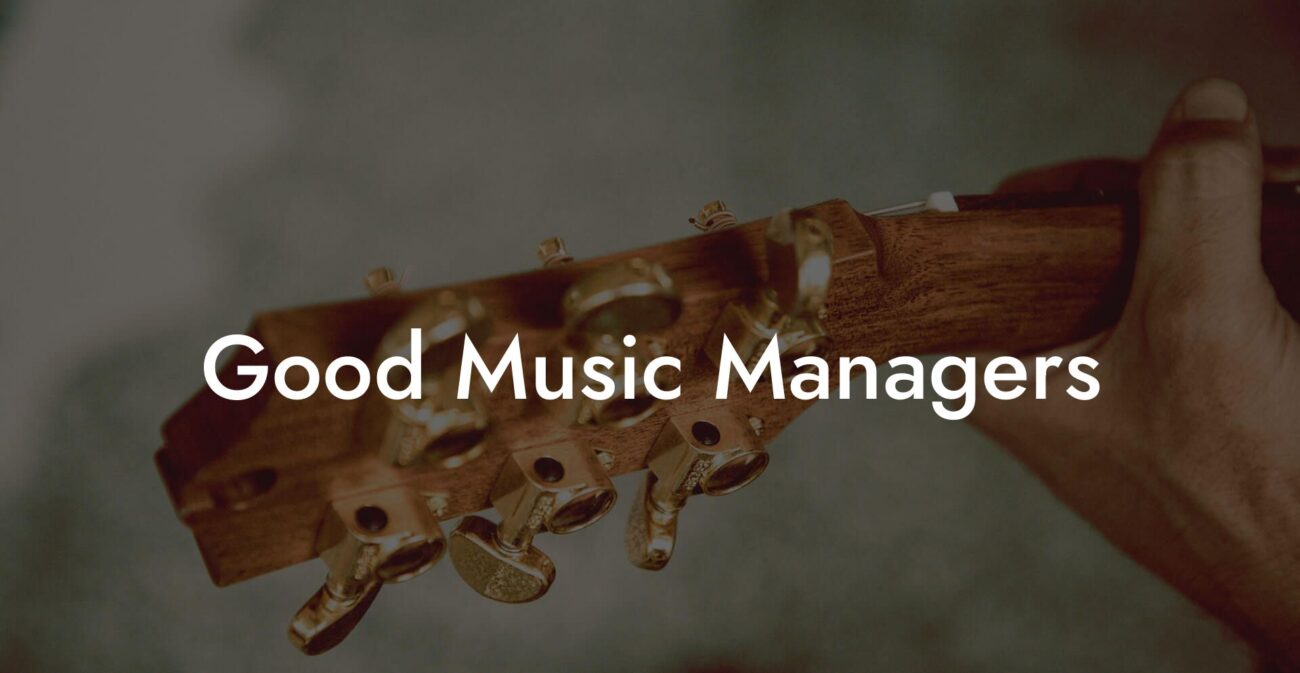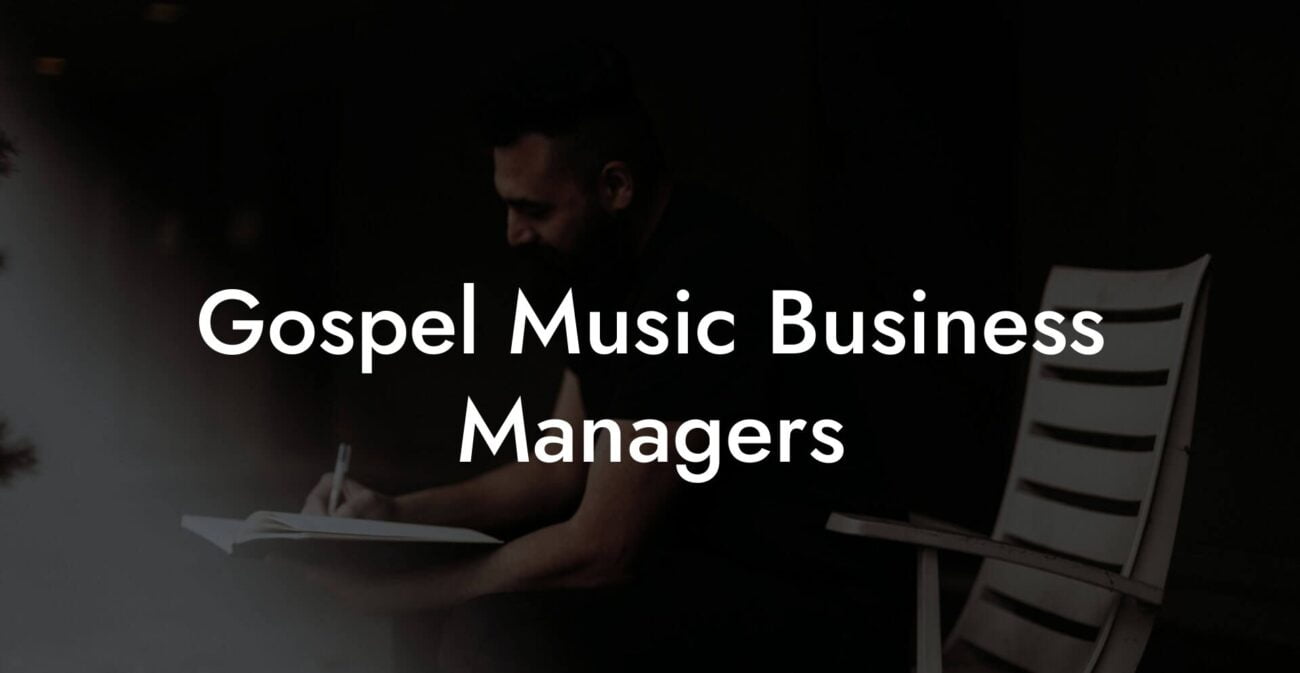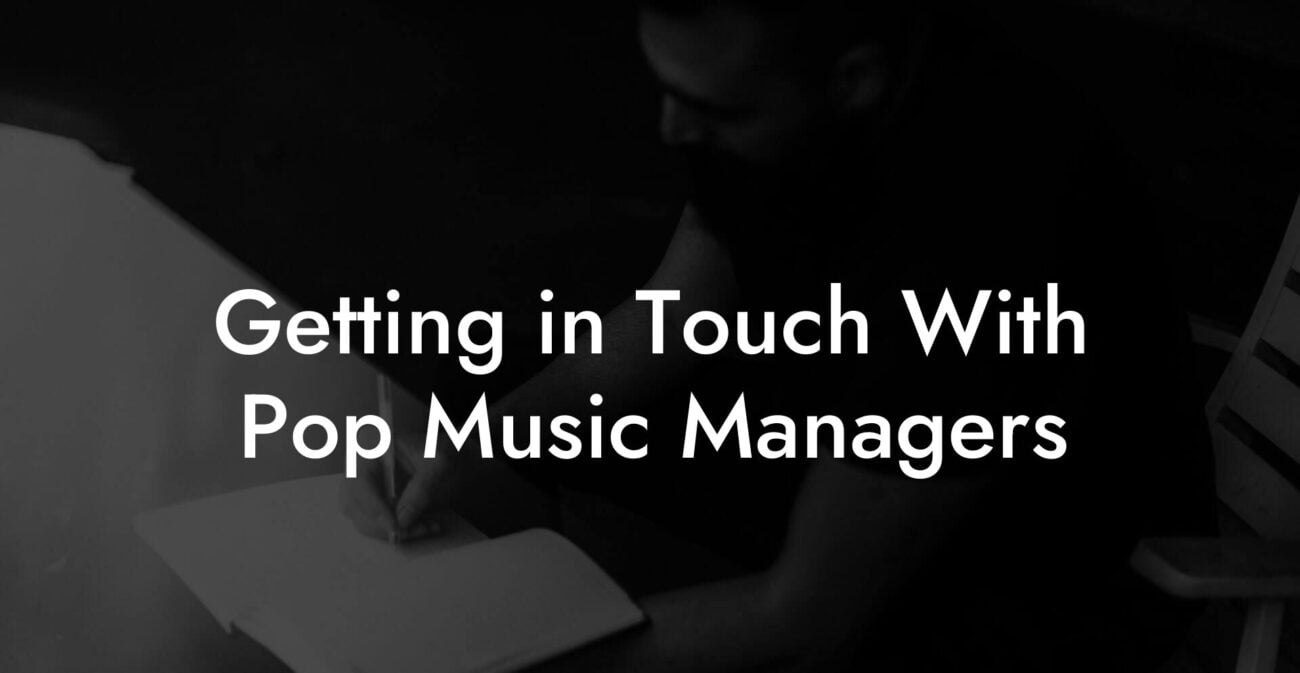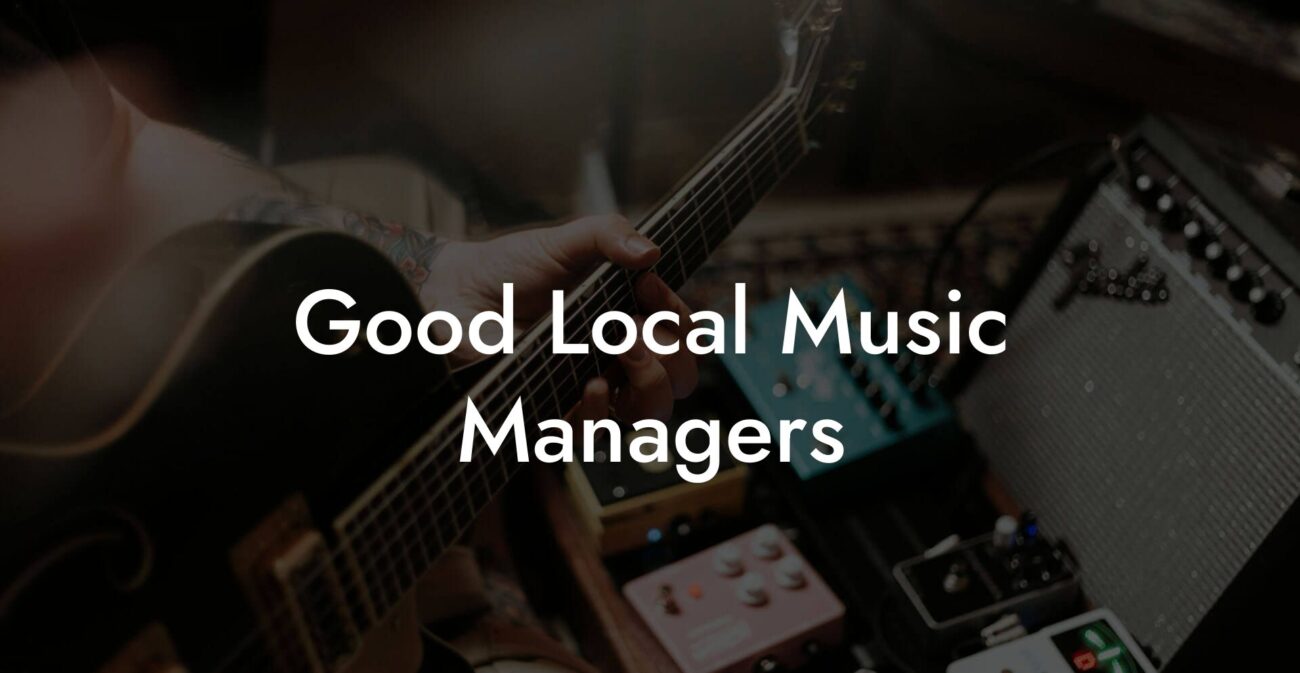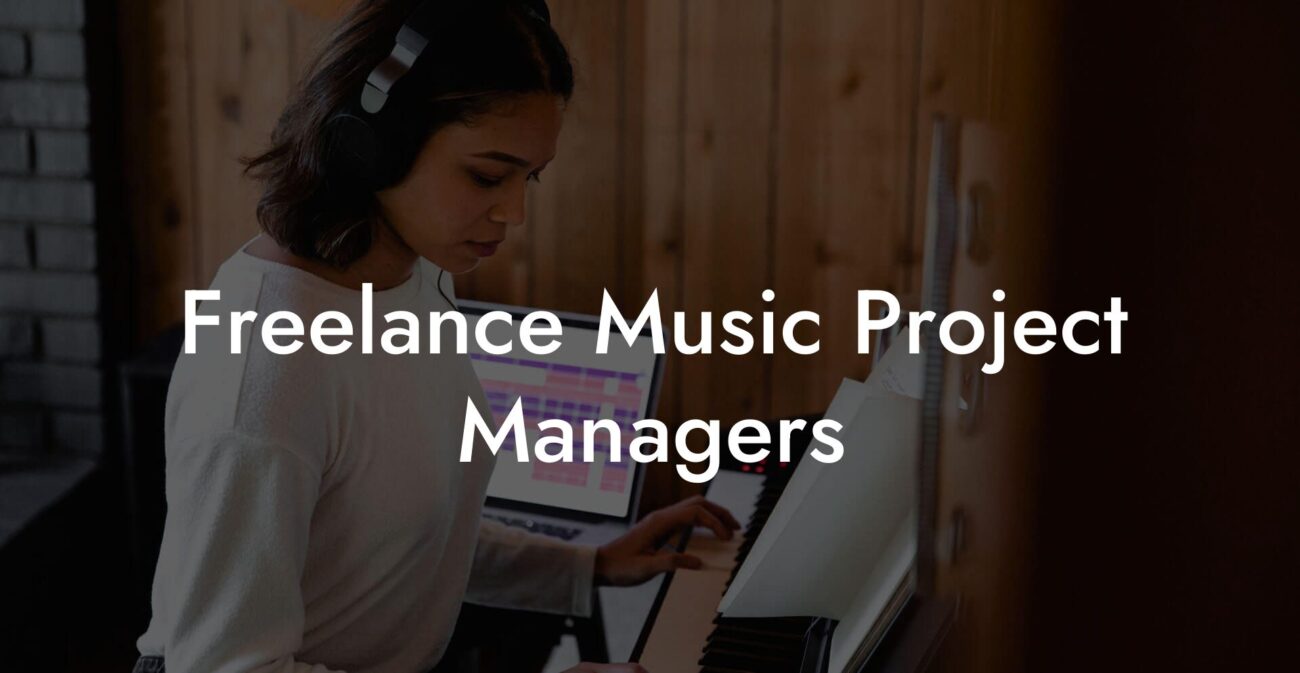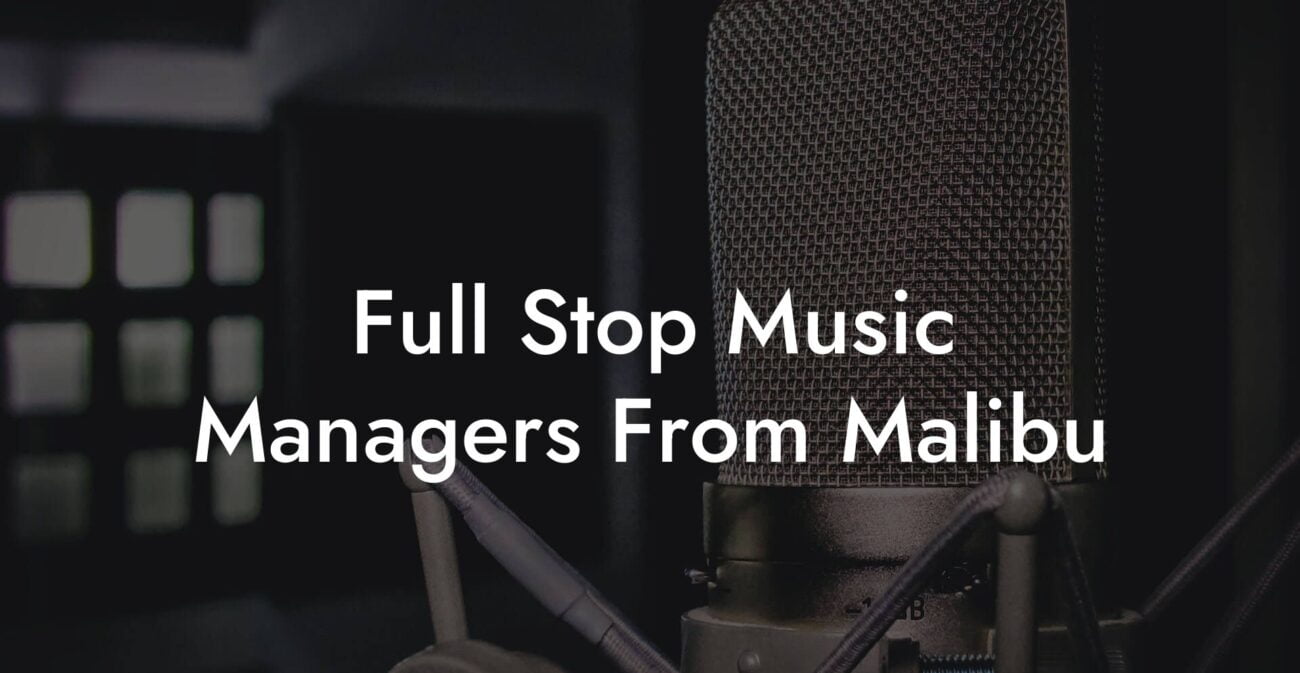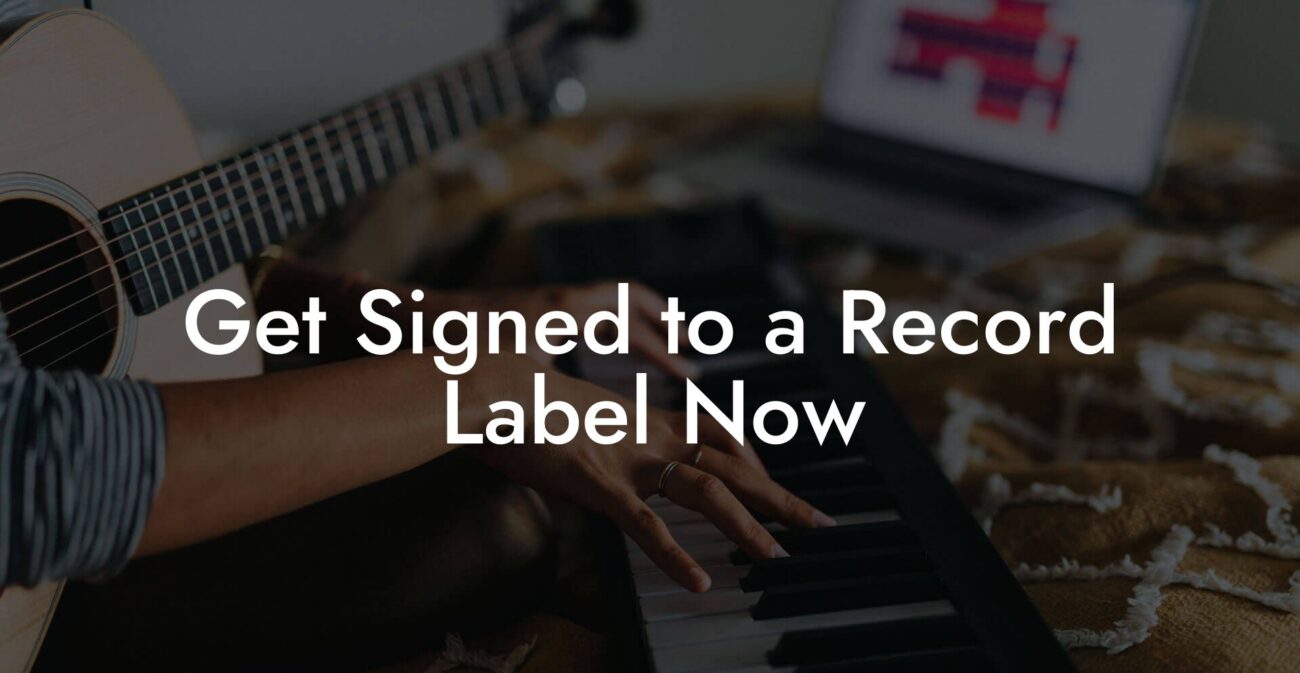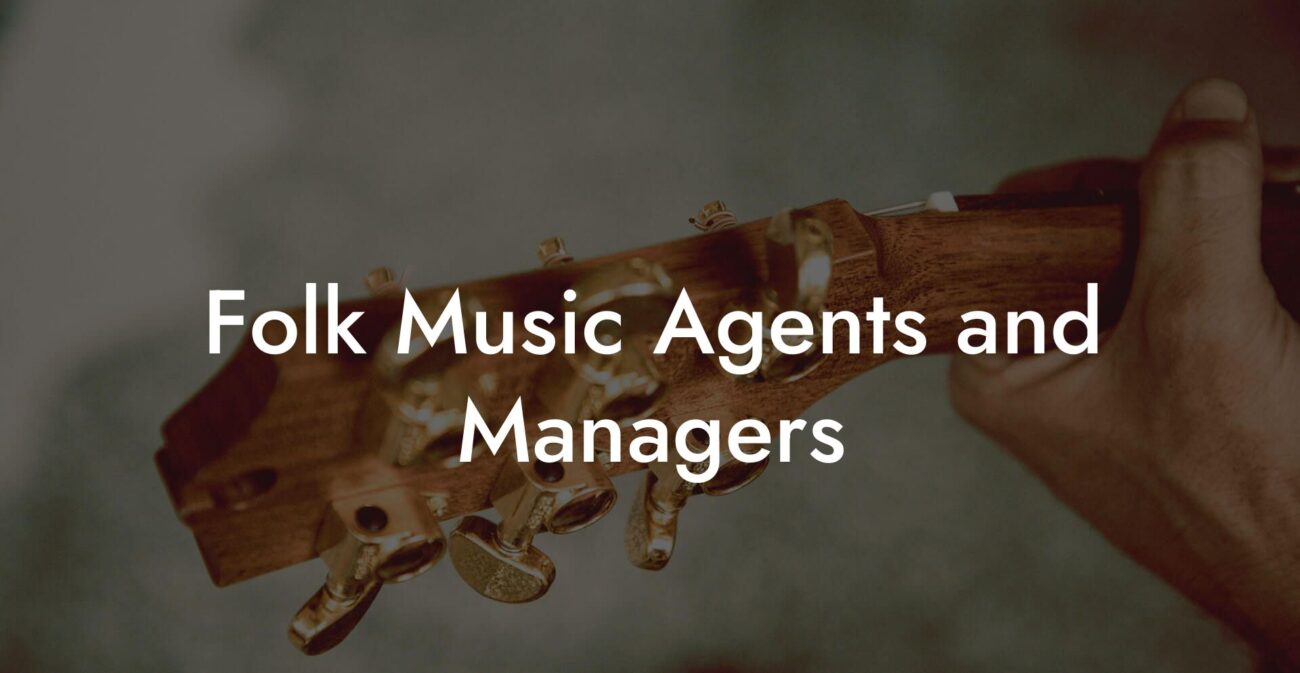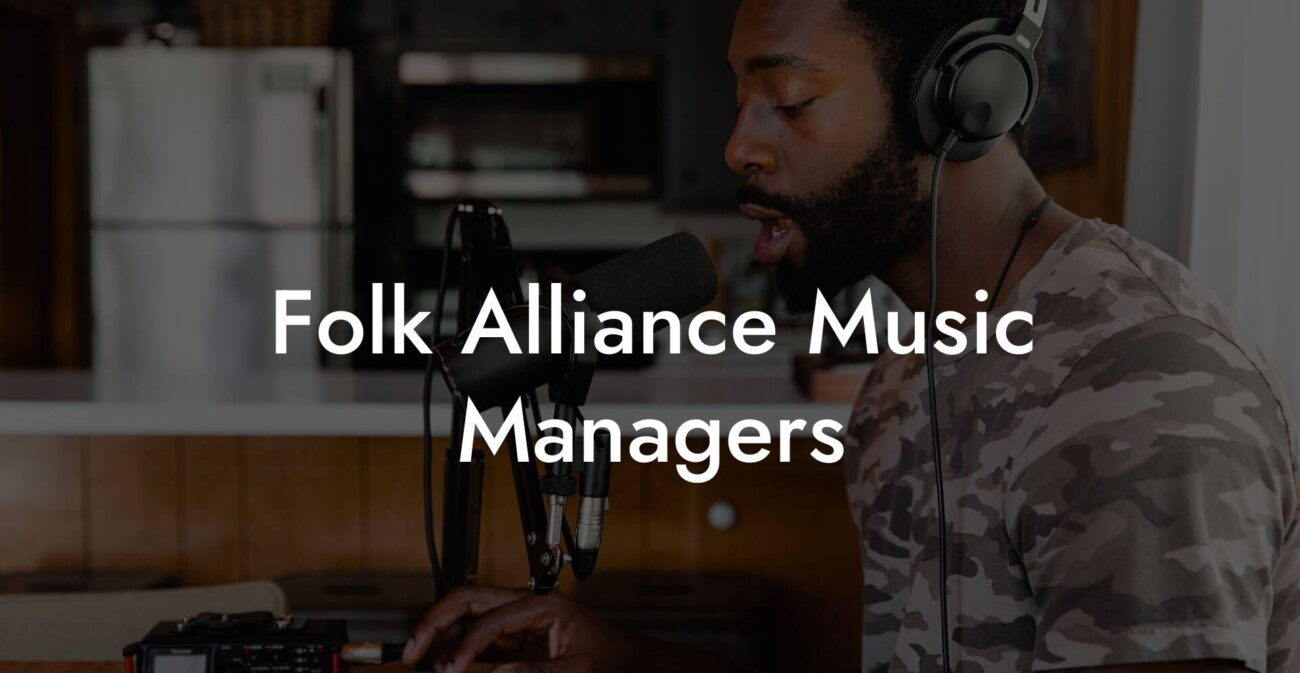Songwriting Advice
How To Make R&B Song
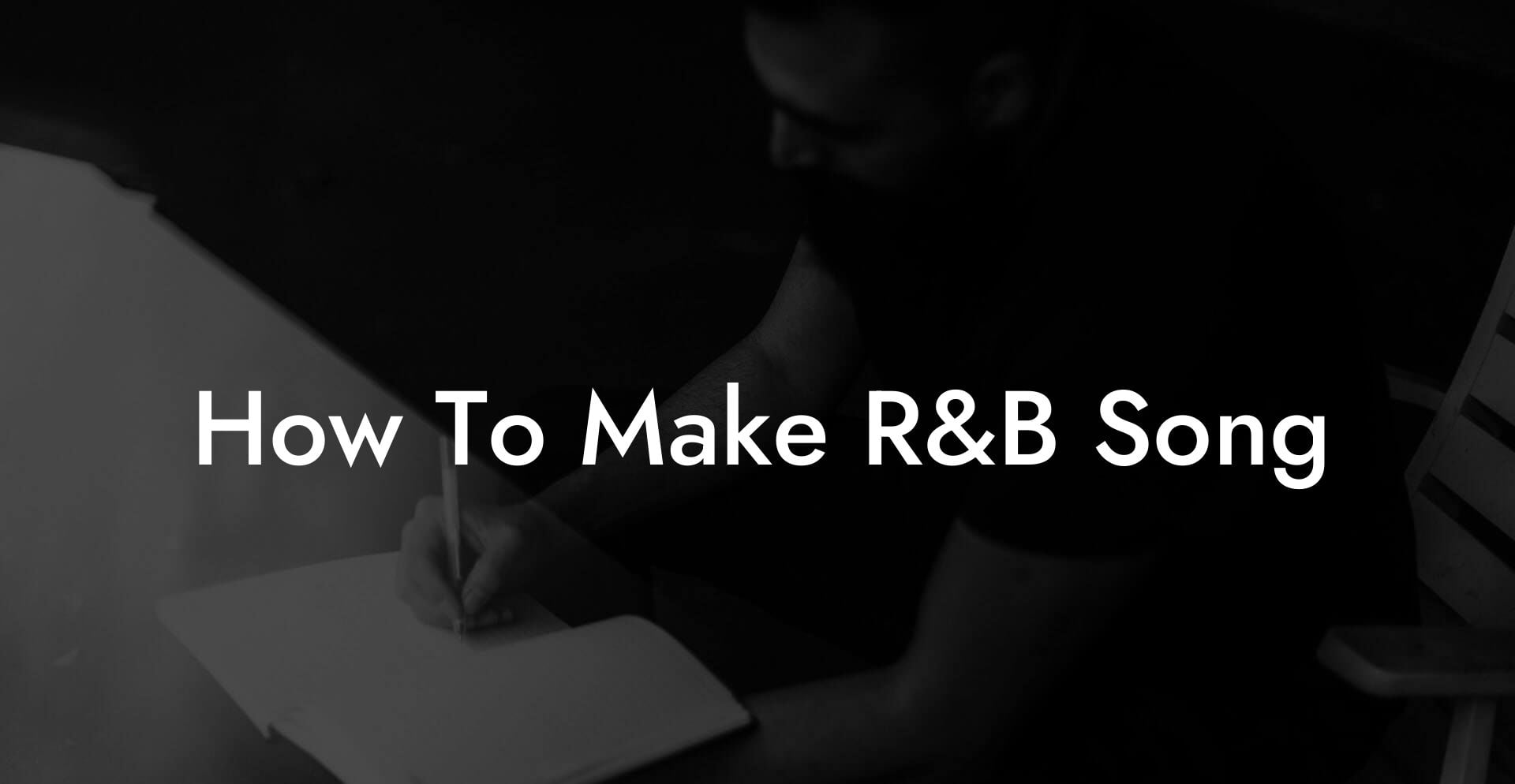
You want your R&B song to feel like a slow burn, not a confused pile of adjectives. You want the groove to breathe, the vocals to tell secrets, and the lyrics to sound like a DM you almost sent. This guide gives you everything from the first chord idea to a demo you can send to a collaborator or drop on streaming. It is written for busy artists who want results fast and for songwriters who care about craft and vibe.
Quick Interruption: Ever wondered how huge artists end up fighting for their own songs? The answer is in the fine print. Learn the lines that protect you. Own your masters. Keep royalties. Keep playing shows without moving back in with Mom. Find out more →
Quick Interruption: Ever wondered how huge artists end up fighting for their own songs? The answer is in the fine print. Learn the lines that protect you. Own your masters. Keep royalties. Keep playing shows without moving back in with Mom. Find out more →
Quick Links to Useful Sections
- What Makes R&B Feel Like R&B
- Pick a Core Promise
- Tempo, Groove, and Pocket
- Slow Burn
- Sultry Mid Tempo
- Groove Hip Movement
- Harmony: Chords That Paint
- Sound Choices and Instrumentation
- Drums: Pocket Over Punch
- Topline: Writing the Vocal Melody
- Start With a Vowel Pass
- Grab the Title Early
- Melodic Shape Tips
- Lyrics: Intimacy Over Statements
- Lyric Tools
- Prosody: Make Words Fit the Groove
- Vocal Production: Intimacy and Impact
- Arranging the Song
- Mixing and Polish
- Demo Workflow You Can Steal
- Collaborations and Credits
- Common Mistakes and How To Fix Them
- Practical Exercises
- Three Line Intimacy Drill
- Vowel Topline Drill
- Pocket Swap
- Pitching and Release Tips
- Real Life Examples You Can Steal
- FAQ
- Action Plan You Can Use Tonight
We will cover core concepts, chord choices, groove and tempo, lyric craft, topline writing, vocal production, arrangement, practical production tips, and music business steps that actually matter. You will leave with concrete exercises, relatable scenarios, and a reliable workflow you can use tonight.
What Makes R&B Feel Like R&B
R&B is more mood than a rulebook. At its best R&B sounds intimate, lived in, and a little reckless. A great R&B track tells a small story and then uses texture to create emotional shade. These are the pillars you need to master.
- Groove that breathes Rhythm is not just tempo. It is where the beat sits behind or in front of the pocket and how the bass and drums talk to the vocal.
- Harmonic richness Extended chords like seventh, ninth, and eleventh chords create the warm colors R&B leans on.
- Vocal intimacy A performance that feels like a confession to one person. Imperfections are often the personality.
- Space and silence Leaving room in the arrangement makes small moments feel huge.
- Specific lyrics Real details make a song feel lived in. A single odd object can say more than a paragraph about feelings.
Pick a Core Promise
Before you touch a piano or open your DAW, write one sentence that states the emotional core of the song. This is not the title. This is the feeling or the lie you are telling yourself. Say it like you are texting your best friend at 2 a.m.
Examples
- I miss your hands not your words.
- We say we are over it but we keep showing up.
- I want to be wild and safe at the same time.
Now make a title from that sentence. Titles in R&B can be short and slightly bitter or luxurious and specific. Titles like Late At Night, Satin, or Your Name on My Chest all land because they are easily imagined and singable.
Tempo, Groove, and Pocket
R&B tempos usually live between slow and mid tempo range. Think 60 to 105 BPM in simple terms. What matters more than exact BPM is where the snare and vocals sit in the pocket.
Slow Burn
60 to 75 BPM. Use with sparse drums, deep bass, and intimate vocal takes. Ideal for bedroom confession songs and dramatic ballads. Let the vocal space stretch and breathe.
Sultry Mid Tempo
75 to 95 BPM. This is the sweet spot for modern R&B. The groove can swing behind the beat while the vocal sits slightly ahead. This tension creates forward motion without urgency.
Groove Hip Movement
95 to 110 BPM. Use for more upbeat R&B that leans into rhythm and invites movement. Keep the texture smoother than pop or hip hop so the mood stays R&B.
Real life scenario: You are writing at midnight with a cheap speaker. You try 70 BPM and the vocal feels like a whisper. You switch to 88 BPM and the voice hits like a head nod. That is your pocket.
Harmony: Chords That Paint
R&B loves colors. Study seventh, ninth, and eleventh chords. Move slowly through chord changes so each color has room to tell its part. Use voice leading to make transitions smooth. A short list of tools will cover most needs.
- Major seventh Adds lush warmth. Good for romantic or dreamy moods.
- Minor seventh Feels intimate and slightly melancholy.
- Dominant seventh Adds tension and soul grit.
- Ninth and eleventh Sprinkle these for sophistication. They make pads and keys feel expensive.
Progression examples
- ii7 → V7 → Imaj7 for a classic soulful resolution
- Imaj7 → vi7 → IVmaj7 → V9 for dreamy modern R&B
- i7 → bVIImaj7 → iv7 for moody minor keys
Real life scenario: You have a loop with a Cmaj7 to Amin7 movement. Add a G9 as a passing chord and the chorus feels like velvet. Small changes in chord color will change the perceived emotion without changing the melody.
Sound Choices and Instrumentation
R&B arrangements blend organic and electronic sounds. Choose one main instrument to carry the identity. It could be a dusty Rhodes, a guitar with tape slap, a low synth patch, or a vocal sample. Keep secondary elements subtle.
- Keys Rhodes or electric piano for warmth
- Guitar Clean plucks and soft chords for intimacy
- Bass Sub bass with slight movement and a few melodic touches
- Drums Soft kicks, clicky hi hats, and snare or clap with room
- Textures Pads, vinyl crackle, or reversed ambience for depth
Production tip: Pick a signature sound and repeat it in small variations. Fans will latch onto that texture as the song identity.
Drums: Pocket Over Punch
Drums in R&B are not always loud. They are placed to support the groove. Use sparse patterns and let the snare or clap sit slightly behind the beat. Program hi hat patterns that sway. Quantize lightly and leave human timing for life.
- Use a tight kick with a short decay for space.
- Layer a soft clap with a snare and place it behind the grid slightly for groove.
- Hi hats can be programmed with triplet subdivisions for bounce.
- Ghost snares on off beats add groove without clutter.
Real life scenario: Your loop sounds robotic. You add a tiny swing and move the clap back 10 milliseconds. It suddenly feels like a room with people in it.
Topline: Writing the Vocal Melody
Topline is the vocal melody and lyric. In R&B the melody should feel conversational in the verse and more melodic in the chorus. Use ornamentation like runs and slides thoughtfully. The goal is to sound like you are telling a secret not performing a thesis.
Start With a Vowel Pass
Hum or sing on vowels over the chord loop. Record three to five takes. Mark the lines that feel easiest to repeat. These gestures become the bones of your chorus.
Grab the Title Early
Place the title on a note that is comfortable to sing but memorable. Often that is a slightly higher note than the verse. Repeat it in a way that becomes a motif.
Melodic Shape Tips
- Verse: keep it mostly stepwise with small leaps for emphasis.
- Chorus: include a small leap into the title then resolve with steps.
- Bridge or middle eight: try a new contour or a register change to keep interest.
Real life scenario: Your chorus has too many words. Strip it to three lines. Sing them on open vowels and find the melody that sticks. You now have a hook.
Lyrics: Intimacy Over Statements
R&B lyrics work best when they are specific and tactile. Avoid sweeping statements unless they hit hard. Give your narrator small actions that reveal bigger feelings. Use contradiction. Wanting safety and wanting to be wild at the same time is classic R&B territory.
Lyric Tools
- Object detail Name the cigarette pack on the table, the perfume that still smells like the couch, the playlist skipping to a certain song.
- Time crumbs Use times like 2 a.m. or the way the laundry still smells like him to anchor the scene.
- Dialogue lines Use quoted fragments that sound like texts to keep authenticity.
- Contrast Put two opposing images together to create tension.
Before and after lyric rewrite
Before: I miss you and I cannot sleep.
After: The clock reads 2 a.m. again. Your hoodie takes up half the bed and none of the room.
Real life scenario: You write a chorus that says I miss you. Instead of repeating that, describe an action that implies missing. Listeners feel it without being told.
Prosody: Make Words Fit the Groove
Prosody is how words land on the music. Speak every line at conversation speed and circle the stressed syllables. Those syllables should line up with strong beats or longer notes. If the sentence stress fights the music, the line will sound off even if the words are great.
Example: The line I still have your T shirt is fine. If you say it naturally the stress falls on still and shirt. Make sure those syllables land on beats where the music supports them. If not, rewrite to I keep your T shirt folded in the day drawer so the stress pattern changes.
Vocal Production: Intimacy and Impact
R&B vocal production combines raw intimacy with tasteful processing. Think of treatment like makeup not surgery. The voice should sound human first then glossy when needed.
- Record multiple passes Single pass for intimacy. Double for thickness in the chorus. Add a third low harmony on the last chorus for lift.
- Use subtle compression To control dynamics without crushing emotion.
- Delay and reverb Short plate reverb and a slap delay can place the vocal in a room. Use sends so you can automate the effect during the chorus.
- Vocal tuning Keep it natural. Light correction is fine to tighten pitch. Avoid robotic tuning unless it is an artistic choice.
- Ad libs and runs Record playful ad libs after the main pass. Keep several takes for comping later.
Real life scenario: The song needs more emotion in the second chorus. You record a breathier second take and double the chorus with a slight pitch shift. The song feels close and huge at the same time.
Arranging the Song
Arrangement in R&B is about contrast and return. Start with a recognizable motif and bring it back in small ways so the listener feels at home. Build slowly and use subtraction as a tool.
- Intro: a motif or vocal fragment that returns later.
- Verse: sparse instrumentation, focus on voice.
- Pre chorus: increase tension with movement in the bass or harmony.
- Chorus: widen the arrangement, add doubles, and let the title breathe.
- Bridge: introduce a new instrument or a different vocal approach.
- Final chorus: add the biggest texture and a countermelody or harmony.
Production tip: Remove the drums or bass before a chorus drop to create space for the first line to land. Silence makes entrance feel large.
Mixing and Polish
Mixer mindset for R&B: clarity, warmth, and presence. Keep the vocal upfront but avoid flattening the dynamics. Use parallel compression on vocals to keep life and control. Give bass a defined space with sidechain to the kick when needed.
- High pass non essential elements to create headroom.
- Use subtle saturation on keys or bass to add harmonic content.
- Automate reverb and delay for section changes only. A dry verse and a wet chorus create contrast.
- Reference songs you love and match perceived loudness not peak numbers.
Demo Workflow You Can Steal
- Make a two to four bar chord loop with a main instrument and a bass idea.
- Set tempo and program a simple drum pocket. Keep it quiet for the first pass.
- Do a vowel topline pass. Record three takes. Mark the lines that repeat naturally.
- Write a verse with two vivid images and one small action. Keep it under eight lines.
- Build a chorus of three lines that capture the core promise. Make the title easy to sing and repeat it.
- Record a simple vocal demo. Add one double in the chorus and one ad lib at the end.
- Listen on phone, car, and earbuds. Make one change only per listen and stop.
Real life scenario: You have 30 minutes before a session. Use this workflow and you will have a demo that communicates mood to a producer or label manager instantly.
Collaborations and Credits
R&B is collaborative. Producers, writers, engineers, and vocalists will shape the song. Be clear early about splits and credits. Use a simple agreement even among friends. It avoids awkwardness later when the song works.
Real life scenario: You and a friend write the song in one night. One of you produced the beat. You both did topline. Write down splits on a napkin. Send a photo. That morning you both feel less anxious about who owns what.
Common Mistakes and How To Fix Them
- Too many ideas Focus on one core promise. If your verse, chorus, and bridge do not point at the same feeling, pick a clearer path.
- Overproduced vocals Keep at least one raw take in the song. Listeners connect to human flaws.
- Chords that compete with the vocal Pull back extended harmonic motion under a dense vocal phrase. Let the voice cut through.
- No space Use silence as an instrument. A one beat rest before the title can make the phrase hit like a revelation.
- Forgetting the pocket If the drums sound like background noise, throw them away and reprogram with swing and micro timing.
Practical Exercises
Three Line Intimacy Drill
Write a chorus that contains exactly three lines. Each line must include one concrete object or action. Time limit 15 minutes. This trains specificity and brevity.
Vowel Topline Drill
Make a two bar loop and do a five minute vowel pass. Identify a repeatable gesture and place a three word title on it. Repeat the title on the final line with one altered word for a twist.
Pocket Swap
Take a drum loop you like. Move the snare back 12 to 20 milliseconds. Move the vocal slightly ahead. A new groove will be born. Listen to the emotional change.
Pitching and Release Tips
When your demo is ready, keep it short. Labels and playlists hear hundreds of tracks. The opening 30 seconds must communicate identity and mood. Include an artist bio, one sentence about your intent, and any noteworthy credits in your pitch.
Distribution tips
- Release singles and visuals to build momentum.
- Pitch to playlists with a short pitch that includes mood keywords and context.
- Use social clips that show personality. A behind the scenes voice memo of the topline can be more persuasive than a glossy reel.
Real Life Examples You Can Steal
Theme: Late night vulnerability.
Verse: The kettle remembers your laugh. I pour two cups and drink only one. Your towel still hangs on the door like a rumor.
Pre chorus: I tell myself to sleep. The city chooses otherwise.
Chorus: Late at night I lose the map and find your name. I say nothing and say everything. Your echo is loud enough to drown the clock.
Theme: Quiet confidence after a breakup.
Verse: I buy the blue dress and leave the tags. The mirror is honest and I listen. The bar lights choose my cheekbones like compliments.
Chorus: I am fine and then I dance like I am someone's long term maybe. I am fine and I am dangerous when I want to be.
FAQ
How long should an R&B song be
Most R&B tracks land between three and four and a half minutes. The priority is momentum and emotional arc. If the song repeats the same thing without adding new texture or information it will feel long. Use the arrangement to add small changes every chorus so the song grows with the listener.
Do I need a big studio to make R&B
No. Many modern R&B records start in a bedroom. Focus on microphone choice, a quiet space, and good headphones. A great song with thoughtful production can be elevated by a mixing engineer later. Get the emotion right first then chase polish.
What chords are common in R&B
Seventh chords, ninths, and suspended textures. Common patterns use slow movement and voice leading. Rather than memorizing progressions, learn a few shapes on the keyboard and practice swapping sevenths and ninths for color.
How do I make my vocal sound intimate
Sing like you are whispering a secret to one person. Record close, keep some breaths, and use light compression. Double the chorus if you want more presence. Keep a raw single take for verses to maintain authenticity.
Should I write lyrics before the beat or after
Either works. Some writers start with a beat for mood and tempo. Others start with a lyric or melody and then find or build a beat that fits. Try both methods and see which gives you more honest results. Many writers find a hybrid approach works best where a simple loop exists and the topline arrives quickly.
How do I make the groove feel human
Introduce subtle timing shifts, add small velocity changes to hi hats, and avoid quantizing everything. Record live instruments or humanize MIDI. Small imperfections create the sense of a room and real players.
How many vocal takes should I record
Record at least three full takes. Do focused passes for lead, doubled chorus, and ad libs. Always record a comp take where you sing freely. Those imperfect moments often contain gold that cannot be recreated on command.
Action Plan You Can Use Tonight
- Write one sentence that states your song's emotional promise. Turn it into a simple title of one to three words.
- Create a two bar chord loop with one main instrument and a bass idea. Keep it under eight seconds.
- Set tempo between 75 and 95 BPM and program a soft drum pocket. Keep the drums quiet for the first pass.
- Do a five minute vowel topline pass. Find a repeatable gesture and place your title on it.
- Write a verse with two vivid images and one small action. Record a raw vocal take. Add one double on the chorus.
- Listen on phone speakers. Make only one change per listening session. Stop when the song communicates mood consistently across devices.
- Send the demo to one trusted friend and ask which line they remember. If they can hum it after one listen you are on the right path.


